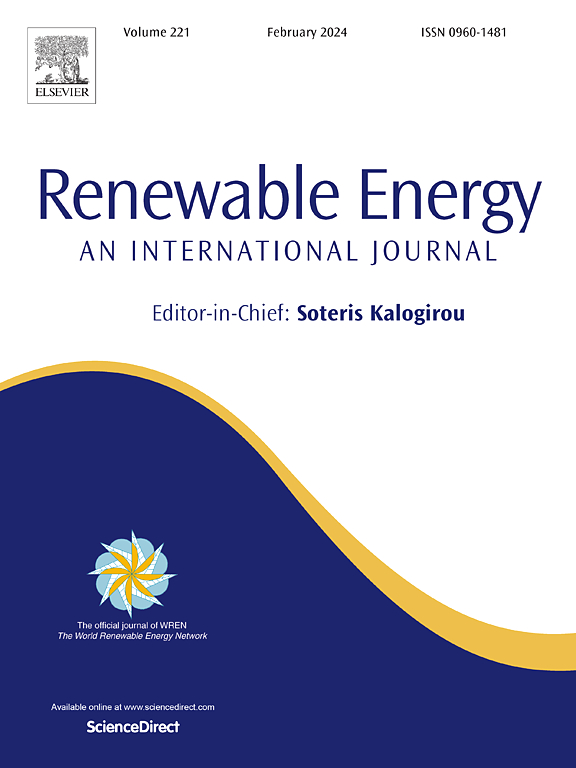Validation of a simulation method for the optical and thermal characterization on small-sized parabolic trough collector for process heat applications
IF 9.1
1区 工程技术
Q1 ENERGY & FUELS
引用次数: 0
Abstract
Nowadays, the need for clean energy and energetic dependency has become a critical issue due to global warming caused by the greenhouse effect resulting from the excessive use of fossil fuels, mainly for producing heat in industry (<200 °C). The solar parabolic trough collector, PTC, with one-axis solar tracking is a potential candidate for providing thermal energy to the industry, so contributing to the decarbonisation of this sector. Currently, new commercial products and several prototypes are appearing, but the key components and structure are still the main elements. In this study, one small-sized PTC for industrial solar heat applications has been developed through optical design and thermal modeling. It has been validated by optical measurements and outdoor testing according to international standard ISO 9806. This collector is designed for working up to 200 °C with thermal an overall efficiency about 75 %, following ISO standard. Furthermore, an analytical model for the inspection of solar tracking error has been developed and validated. The optical simulation is conducted through the Monte Carlo ray-tracing technique in Tonatiuh, and the thermal simulation is conducted in CFD. Measurements are conducted in the experimental testing ring in the facilities of CENER (Centro Nacional de Energias Renovables) which is part of its testing laboratory accredited by ENAC, Spanish accreditation body, and recognized by SolarKeyMark in Europe. The simulation and experimental results obtained show a maximum difference of 0.8 %, demonstrating the validity of the models.
小型抛物槽集热器的光学和热特性模拟方法的验证
如今,由于过度使用化石燃料(主要用于工业供热)造成的温室效应导致全球变暖,对清洁能源和能源依赖的需求已成为一个关键问题。太阳能抛物槽收集器,PTC,具有单轴太阳能跟踪,是为该行业提供热能的潜在候选者,因此有助于该行业的脱碳。目前,新的商业产品和几个原型正在出现,但关键部件和结构仍然是主要元素。在本研究中,通过光学设计和热建模开发了一种用于工业太阳能热应用的小型PTC。经光学测量和室外测试,符合国际标准ISO 9806。该集热器设计用于高达200°C的工作,热总效率约为75%,符合ISO标准。在此基础上,建立了太阳跟踪误差检测的分析模型并进行了验证。光学模拟在Tonatiuh中通过蒙特卡罗光线追踪技术进行,热模拟在CFD中进行。测量是在CENER (Centro Nacional de Energias Renovables)设施的实验测试环中进行的,CENER是西班牙认证机构ENAC认可的测试实验室的一部分,并得到欧洲SolarKeyMark的认可。仿真结果与实验结果的最大误差为0.8%,验证了模型的有效性。
本文章由计算机程序翻译,如有差异,请以英文原文为准。
求助全文
约1分钟内获得全文
求助全文
来源期刊

Renewable Energy
工程技术-能源与燃料
CiteScore
18.40
自引率
9.20%
发文量
1955
审稿时长
6.6 months
期刊介绍:
Renewable Energy journal is dedicated to advancing knowledge and disseminating insights on various topics and technologies within renewable energy systems and components. Our mission is to support researchers, engineers, economists, manufacturers, NGOs, associations, and societies in staying updated on new developments in their respective fields and applying alternative energy solutions to current practices.
As an international, multidisciplinary journal in renewable energy engineering and research, we strive to be a premier peer-reviewed platform and a trusted source of original research and reviews in the field of renewable energy. Join us in our endeavor to drive innovation and progress in sustainable energy solutions.
 求助内容:
求助内容: 应助结果提醒方式:
应助结果提醒方式:


